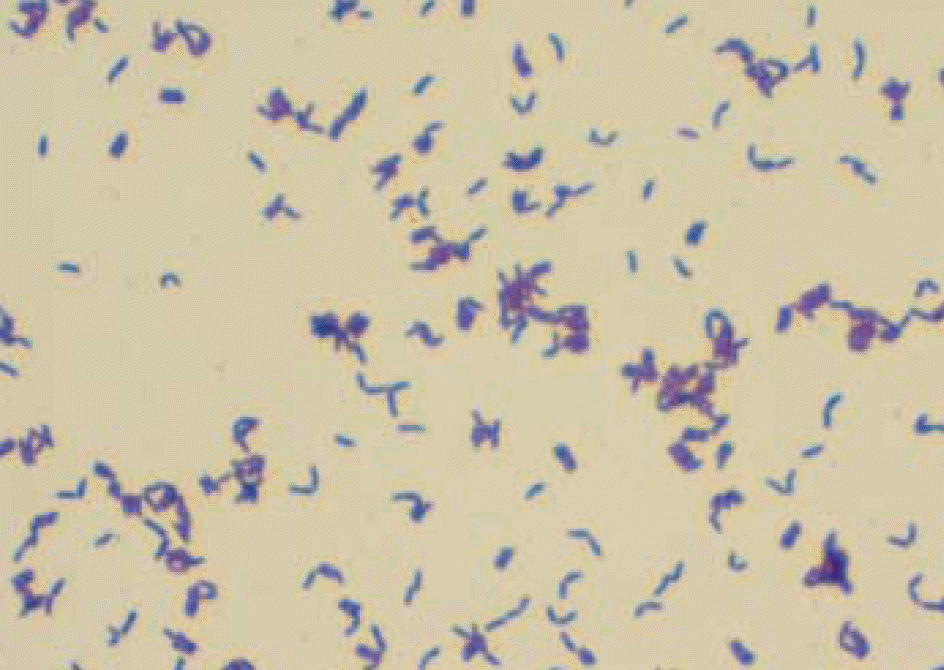Abstract
Arthrobacter woluwensis, a catalase-positive coryneform bacterium recognized as an opportunistic pathogen, was repeatedly isolated from the blood of a 56-year-old male patient with metastatic colon cancer. The isolate was identified by various phenotypic tests and by sequencing analysis of 16S rRNA. Antimicrobial susceptibility testing was performed by E-test; the MICs to vancomcyin, cefotamine, and penicillin were 1.5 μg/mL, >64 μg/mL, and 4 μg/mL, respectively. The patient was treated with vancomycin, and the subclavian catheter, which was presumed to be the source of the infection, was removed. Thereafter, repeated blood cultures did not grow the organism. The infections of human caused by A. woluwensis have not been reported previously in Korea, probably because of the difficulty of identifying Arthrobacter strains by conventional biochemical tests.
References
1. Hou XG, Kawamura Y, Sultana F, Shu S, Hirose K, Goto K, et al. Description of Arthrobacter creatinolyticus sp. nov., isolated from human urine. Int J Syst Bacteriol. 1998; 48:423–9.
2. Funke G, Hutson RA, Bernard KA, Pfyffer GE, Wauters G, Collins MD. Isolation of Arthrobacter spp. from clinical specimens and description of Arthrobacter cumminsii sp. nov. and Arthrobacter woluwensis sp. nov. J Clin Microbiol. 1996; 34:2356–63.
3. Funke G, Pagano-Niederer M, Sjoden B, Falsen E. Characteristics of Arthrobacter cumminsii, the most frequently encountered Arthrobacter species in human clinical specimens. J Clin Microbiol. 1998; 36:1539–43.
4. Bernasconi E, Valsangiacomo C, Peduzzi R, Carota A, Moccetti T, Funke G. Arthrobacter woluwensis subacute infective endocarditis: case report and review of the literature. Clin Infect Dis. 2004; 38:e27–31.
5. Wauters G, Charlier J, Janssens M, Delmee M. Identification of Arthrobacter oxydans, Arthrobacter luteus sp. nov., and Arthrobacter albus sp. nov., isolated from human clinical specimens. J Clin Microbiol. 2000; 38:2412–5.
6. Maki DG, Weise CE, Sarafin HW. A semiquantitative culture method for identifying intravenous-catheter-related infection. N Engl J Med. 1977; 296:1305–9.

7. Bernard KA, Bellefeuille M, Ewan EP. Cellular fatty acid composition as an adjunct to the identification of asporogenous, aerobic gram-positive rods. J Clin Microbiol. 1991; 29:83–9.

8. Funke G, Carlotti A. Differentiation of Brevibacterium spp. encountered in clinical specimens. J Clin Microbiol. 1994; 32:1729–32.
9. Tang YW, Ellis NM, Hopkins MK, Smith DH, Dodge DE, Persing DH. Comparison of phenotypic and genotypic techniques for identification of unusual aerobic pathogenic gram-negative bacilli. J Clin Microbiol. 1998; 36:3674–9.

10. Shin KS, Son BR, Hong SB. A case of bacteremia caused by Arcobacter butzleri. Korean J Lab Med. 2005; 25:259–61.
Fig. 1.
Microscopic findings of Arthrobacter woluwensis isolated from the blood culture showing irregularly shaped Gram-positive rods (Gram stain, ×1,000).

Table 1.
Biochemical characteristics of Arthrobacter woluwensis isolated from the patient
| Test* | A woluwensis† | Isolate |
|---|---|---|
| Catalase | + | + |
| Motility | − | − |
| Growth at 20° | growth | growth |
| 42° | growth | growth |
| esculin | + | + |
| gelatin hydrolysis | + | + |
| citrate | + | + |
| Nitrate reduction | − | − |
| Urease‡ | + | + |
| β-galactosidase§ | + | + |
| α-glucosidase§ | + | + |
| N-acetyl β-glucosaminidase§ | + | + |
| DNase | + | NT |
| Desferrioxamine | R | NT |
| Alkaline phosphatase | + | + |
| β-glucosidase§ | + | + |




 PDF
PDF ePub
ePub Citation
Citation Print
Print


 XML Download
XML Download